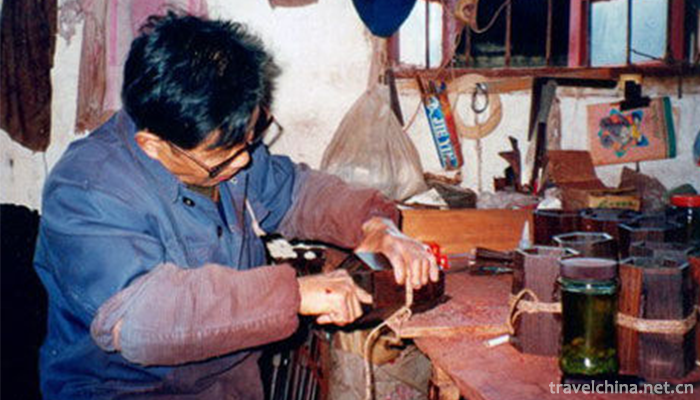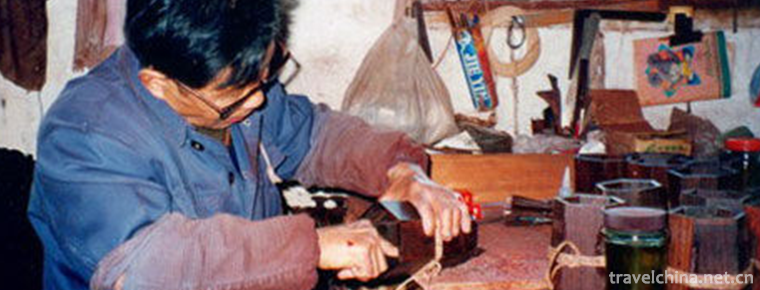Production Techniques of National Musical Instruments
Production Techniques of National Musical Instruments
The production of national musical instruments in Suzhou is one of the local traditional handicraft techniques in Jiangsu Province. With a long history, a wide range of varieties, exquisite skills and talented people, it is well known both at home and abroad. It is famous all over the country for its beautiful shape, concise structure, reasonable structure, meticulous workmanship, elegant style, non-stereotyped, sweet, pure tone, distinctive artistic features and unique local style.
Process Overview
The technique of making Suzhou national musical instruments is a special craft of traditional handmade production. Although some mechanical substitutions have been made in the process of wood cutting and ingredients, it is different from ancient times. However, in most of the woodworking, sculpture, lacquer and other processes still need to be completed by hand. The completion of a musical instrument requires the cooperation of material selection, mixing, woodworking, sculpture, lacquering, inlaying, proofreading, percussion instrument (sound bronze instrument) through many processes such as material selection, smelting, filming, shaping, copying, scraping and timbre setting. Each process has its own skills.
The representative works of Suzhou national musical instrument production techniques include Erhu, Ruan, Guzheng, Pipa and the restored lost pipes and bells, as well as Su Di, Su Xiao, Su Rong and Su Drum, which are crowned with the word "Su".
historical value
The historical and cultural value of Suzhou's national musical instrument making skills lies in the fact that the Chinese nation, after thousands of years of development of civilization and society, has condensed the wisdom and painstaking efforts of skilled craftsmen of all dynasties. She not only has high artistic value and practical value, but also contains profound historical and cultural connotations. She integrates various cultural and artistic elements, such as history, color, aesthetics, and combines various craftsmanship techniques such as sculpture, carving, painting and mosaic, forming a unique and systematic handicraft.
Historical origin
The origin of the production of national musical instruments in Suzhou can be traced back to the Spring and Autumn Period. At that time, the bronze smelting technology of Wu State was very developed, which provided favorable conditions for the production of bronze musical instruments. In 1964, nine bells of Zang Sun were unearthed from the tomb of Eastern Zhou Dynasty at Luhe Chengqiao, Jiangsu Province. There is an inscription on the front, including the word "attack my arrears", which is proved by textual research to be "attack my arrears", namely "Gou Wu". This group of bells is the earliest Wudi musical instrument found so far.
From the first wooden lacquer Guqin (Qixian Qin) unearthed in Changqiao Village, Changqiao Town, Wuxian County, Suzhou City in 1991, it can be seen that the ancestors of Wu prefecture, who lived in the pre-Qin period more than two thousand years ago, had their own unique national musical instruments.
Process characteristics
Suzhou's national musical instruments are beautiful in shape, fine in craftsmanship, bright in paint and beautiful in timbre.
Beautiful shape: The national musical instrument integrates the technical characteristics and performance. It considers not only the convenience and practicability of use, but also the beautiful shape and decorative national characteristics of each instrument.
Excellent craftsmanship: Every national musical instrument is made from material selection, ingredients, woodworking, polishing, painting, assembly, timbre and other processes are meticulous and thorough, impeccable.
Paint gloss: Painting technology of musical instruments should make their appearance perfect through dozens of elaborate working procedures, achieve the effect of paint-like non-paint, and make the performer feel smooth and smooth.
Beautiful timbre: The advantages and disadvantages of musical instruments are not only manifested in appearance, but also in the quality and timbre of musical instruments. The sound quality should be deep and full, penetrating, sweet, pure, mellow, bright and balanced, and suitable for the style and aesthetics of the performers.
The characteristics of Suzhou national musical instruments are: beautiful shape, concise, reasonable structure, not cumbersome, exquisite workmanship, meticulous, elegant style, not out of style, sweet and pure tone, with strong national characteristics. It fully embodies the cultural connotation and artistic style of Suzhou national musical instruments. This kind of connotation and style is the essence and soul of Chinese national musical instruments.
Inheritance significance
Suzhou national musical instrument is a model of Chinese national musical instrument production. In 1984, Huqiu Brand "Red Wood Professional Erhu" won the high-quality product award of the Ministry of Light Industry of China. In the same year, it also won the national quality silver award (no gold award, the highest industry award). In 2002, the original lost and restored seal was reformed to make its range broader, timbre sweeter and transposition more perfect. It has been recognized by experts and filled the gap in China. In May 2004, he won the special gold medal of China International Patent and Famous Brand Exposition, and in July of the same year, he won the national patent.


-
1.Rob Village
Located 35 kilometers southwest of Yuli County, Luobu Village is 85 kilometers south of Korla City. The village covers 72 square kilometers and has more than 20 families
Time 2019-02-06 -
2.Stone Old Man Sightseeing Park
Shilao Sightseeing Park is located in Qingdao City to Laoshan Scenic Area, east of the fishing banquet in the Tang Dynasty, with an area of 1200 mu. Starting at the end of 1999
Time 2019-02-08 -
3.Daur Ruzhigle Dance
"Luzhigle" is a representative folk dance of Daur nationality. It varies from place to place, including "Alhambo", "Langtudabe", "Hakumai", "Hagen Melger&q
Time 2019-04-22 -
4.Construction Skills of Official Ancient Architecture
In the process of construction and maintenance of the Palace Museum ancient buildings, a complete set of traditional palace building construction techniques with strict shape has been formed on the ba
Time 2019-05-01 -
5.Legend of Ji Gong
The legend of Jigong is a kind of Chinese folk oral literature evolved from the story of Daoji, a Buddhist monk in the Southern Song Dynasty. It is centered in Tiantai County,
Time 2019-05-05 -
6.Ningbo Mud Golden Paint
Ningbo mud gold paint is a local traditional lacquerware process in Zhejiang Province. Chinese raw lacquer is the main raw material. Raw lacquer, also known as big lacquer and real lacquer,
Time 2019-06-07 -
7.Tu Wedding
The custom of Tu people's wedding in Huzhu Tu area has a long history. Tu people's wedding custom is gradually formed and developed through the struggle with nature and the long-term practice of produ
Time 2019-06-23 -
8.Xuanbi Production Skills
Xuanbi has a long history. Originated in the Qin Dynasty, it flourished in the Tang and Song Dynasties. At the end of Song Dynasty and the beginning of Yuan Dynasty, there were frequent wars, and the
Time 2019-07-09 -
9.North Sichuan Medical College
North Sichuan Medical College is located in Nanchong City, a famous historical and cultural city in Sichuan Province and the birthplace of Three Kingdoms Culture. The school's predecessor was the Nort
Time 2019-08-31 -
10.Beijing Electronic Science and Technology Institute
Beijing Electronic Science and Technology Institute is a general university which trains specialists in information security and office automation for Party and government organs at all levels. The Co
Time 2019-09-06 -
11.Leshan social service
By the end of 2018, there were 13 social welfare homes in Leshan City with 2908 beds and 2182 people in the hospital. The sales of social welfare lottery tickets totaled 385.69 million yuan, raised 109.75 million yuan of welfare lottery public welfare fund,
Time 2020-12-17 -
12.Yibins first industry
In 2019, the total output value of agriculture, forestry, animal husbandry and fishery in Yibin is 45.084 billion yuan, up 2.8% over the previous year; the added value of agriculture, forestry, animal husbandry and fishery is 28.346 billion yuan, an increase of 3.0%.
Time 2020-12-18